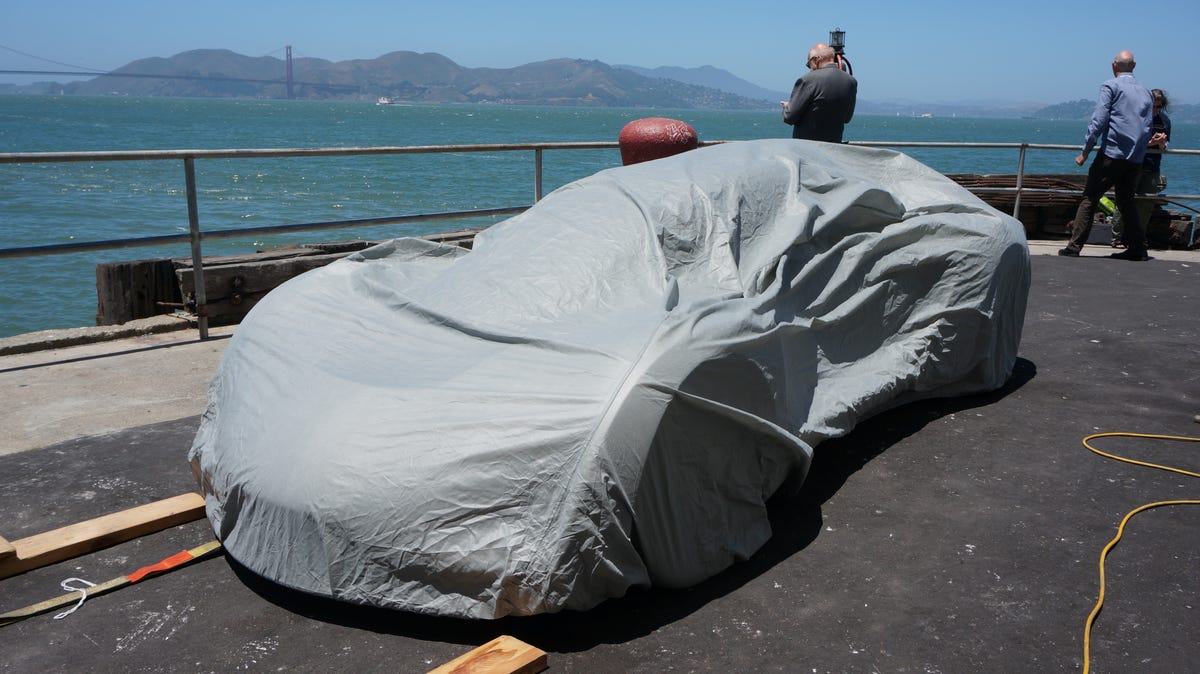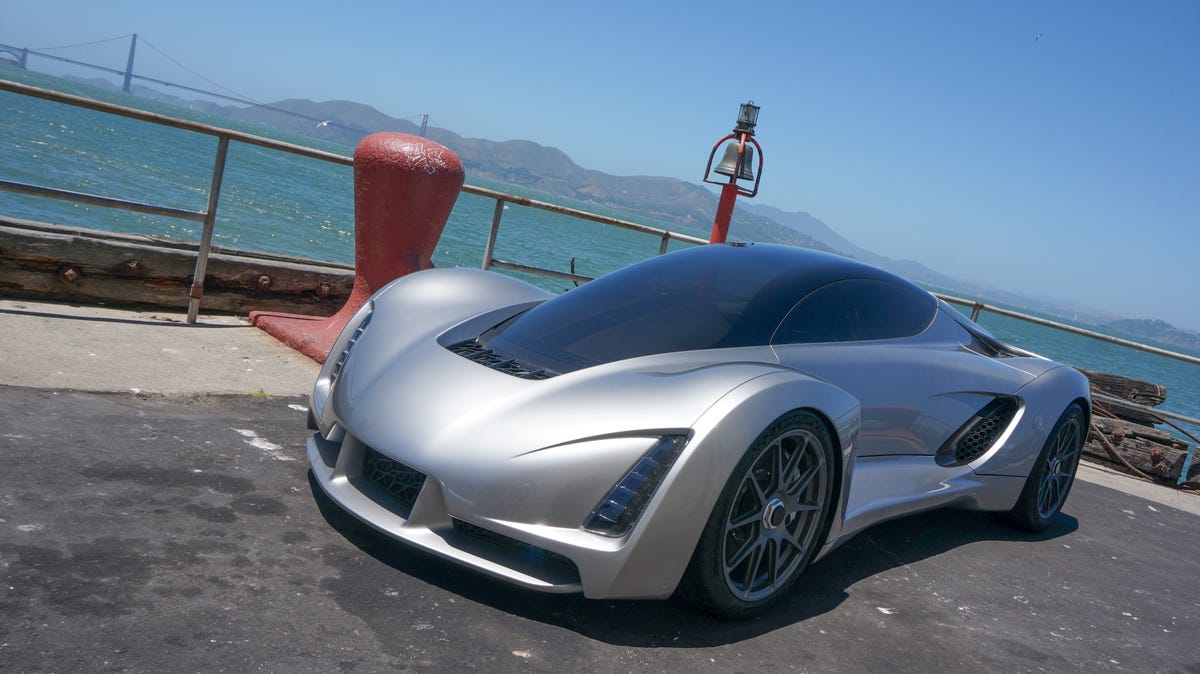The DM Technologies Blade could be the 3D-printed car of the future
The Blade is beautiful and powerful, but it's the 3D-printed node matrix that underpins the supercar that we're most interested in.

Unveiling the DM Blade
On a windy afternoon in San Francisco, I met with DM Technologies to get an early peek at the Blade.

The Blade unveiled
The Blade is a gorgeous, low-slung supercar that DM thinks is poised to change the way we look at manufacturing.
DM suspension node
The revolution happens beneath the skin: the Blade's lightweight chassis is composed of a network of 3D printed aluminum alloy "nodes."
DM Blade carbon tube coupler
These nodes are joined together by lightweight and stiff carbon fiber tubes at interfaces like these. The internal features of these interfaces — which are used to vacuum-inject the adhesive that perfectly affixes the carbon tubes to the nodes — are what necessitates 3D printing.
DM Blade suspension node
Each of the nodes is labeled during its 3D printing to aid in quick assembly. The nodes and carbon tubes form a tubular frame not unlike what you'd see in a race car. DM states that its node construction yields a chassis that is "90 percent lighter than traditional cars, despite being much stronger and more durable."
Quick assembly
DM Technologies tells us that a team of two workers was able to assemble the Blade's tubular frame in about half an hour. Final assembly of the engine, body shell, suspension and finishing — obviously — takes a bit longer than that.
DM Technologies Blade
DM built the low-slung and angry Blade to attract attention to its "dematerialized" manufacturing techniques.
From supercars to sedans
Because the 3D-printed nodes are customizable and the carbon tube matrix is scalable, the underpinnings of the Blade could easily be scaled and re-shelled to accommodate, for example, a small pickup truck or large sedan.
Customizable by design
The node chassis can be widened or lengthened, can accommodate different engine or suspension setups and can generally be customized to the manufacturer's intended person.
Low-cost manufacturing
The modular node technology, according to DM, could also be helpful in bringing low-cost automotive manufacturing to underdeveloped countries...just maybe not in the form of a supercar.
Carbon fiber shell
The Blade features an alloy and carbon node frame that is wrapped in painted carbon fiber bodywork. The carbon shell is not structural, so DM could be creative with the styling and aerodynamics.
700 horsepower
Founder and CEO of Divergent Microfactories Kevin Czinger tells me that, at about 1,400 pounds and with an output of about 700 horsepower, the Blade has a better power-to-weight ratio than the Bugatti Veyron.
Integrated wing
The engine is located at the rear of the vehicle, just beneath this integrated wing.
Bi-fuel engine
The engine is a turbocharged bi-fuel setup that can run on either compressed natural gas or gasoline. The Blade has separate tanks for each fuel type.
Turbocharged
The Blade is significantly smaller in person that it looks in photos, so the engine bay is only about 2 feet wide. The routing of the turbo, exhaust and intake piping is intricate.
Tandem seating
The Blade's door lifts up and outward, not unlike that on a McLaren P1, to reveal centralized tandem seating for the driver and one passenger.
Simple cockpit
The interface is simple. At the head is a small digital instrument cluster and not much else.
3D-printed details
As a showcase for 3D printing in manufacturing, the Blade's various grilles and vents all feature complex and organic designs.
Fuselage design
The central fuselage houses the people and the engine.
Low and wide
Wide haunches are filled with 19-inch wheels, Brembo racing brakes and sticky Michelin Pilot Sport Cup tires — 235mm wide up front and 265mm out back.
Democratizing the auto
DM plans to sell a limited number of Blades out of its own microfactory, but the company says it ultimately envisions "democratizing" auto manufacturing by providing its node-building techniques to others.
DM Technologies Blade
According to DM, "The goal is to put the platform in the hands of small entrepreneurial teams around the world, allowing them to set up their own microfactories and build their own cars and, eventually, other large complex structures."
DM Technologies Blade
Kevin Czinger, founder and CEO of Divergent Microfactories, poses beside the Blade.
DM Technologies Blade
Kevin Czinger, founder and CEO of Divergent Microfactories, poses in the Blade.
DM Technologies Blade
“At Divergent Microfactories,we’ve found a way to make automobiles that holds the promise of radically reducing the resource use and pollution generated by manufacturing. It also holds the promise of making large-scale car manufacturing affordable for small teams of innovators," Czinger says in a release June 24.

